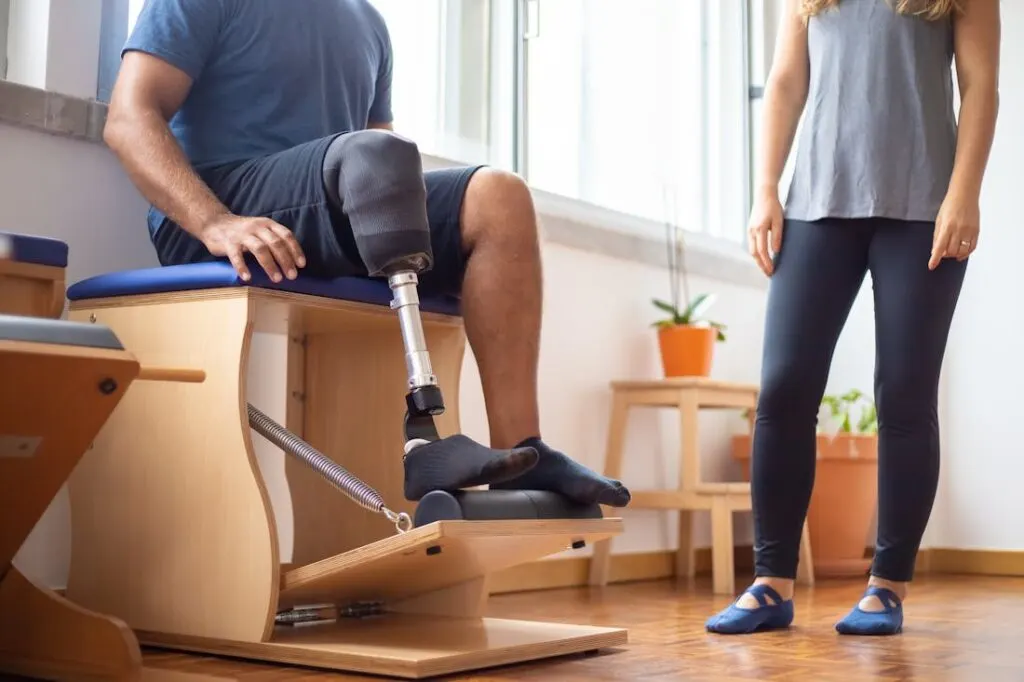This post may contain affiliate links. I only recommend products I use and love. Read the full disclosure here
Last Updated on May 3, 2024 by Alaina
Dealing with an injury, whether it be from a car crash or a sports incident, can be tedious and frustrating. To get yourself back to health, there are many steps that you can take. Read below to discover the nine essential steps for post-injury health improvement.

Work with a Physical Therapist
Physical therapy is almost always a requirement for most injuries. Physical therapists are specially skilled to work with all kinds of injuries and will set up a gradual recovery plan for you. Being consistent with your physical therapy appointments and putting your all into every session will lead to consistent and correct recovery.
Although physical therapy can sometimes be exhausting and frustrating, it is important to remember that the better you recover from your injury, the longer your body will stay mobile late into life. Those who neglect to take physical therapy seriously may have permanent stiffness or incorrectly healed body parts.
Sort Out Your Legal Issues
Although this is not a physical recovery step, it is extremely important for your mental and financial health, which are big parts of your post-injury health improvement journey. If you are fighting with your insurance company to get the compensation you need to properly heal from your injury, then it is time to contact a legal team for car accidents in Denver – if that’s where you’re located, that will fight for your rights and get you the money you need.
Dealing with legal issues on top of trying to improve your health can be overwhelming, so letting an experienced team of lawyers take the weight off of your shoulders is the best decision you can make. They will build a case for you and fight for you in court if needed.
Prioritize Rest
If you have an injury that requires you to sit a lot and take time off of work, this might make you stir crazy, but it is an essential step in the recovery process. Your body is working overtime to heal and regenerate damaged cells, so focusing most of your energy on that is the best thing you can do. Take advantage of the time you get off work to catch up on sleep, elevate your limbs, and focus on healing.
Focus On Low-Impact Exercise
This kind of exercise like swimming or riding a bicycle can help you slowly build your strength back after an injury without having to put too much pressure on the affected areas. These types of exercises should be integrated in little by little, allowing your body to slowly build muscle and heal at the same time. Different at-home exercises prescribed by your physical therapist can also be added to your exercise routine so that you can alternate exercising other parts of your body and then strengthening the injured areas.
Eat Healthy Meals
The food that you put into your body while you are healing is an important factor in the speed of recovery. Eating greasy and fatty junk food gives your body very little energy, which will make you fatigued and less motivated to move to help your post-injury health improvement recovery.
Eating protein-rich foods like meats, cheeses, nuts, and beans will fuel your body and help it to continue working to heal you. You may even need to eat more than normal because your body is burning through so much fuel to heal the damaged cells.

Stay Hydrated
Drinking lots of water and electrolyte-infused beverages is an important part of post-injury health improvement. Doing so will stimulate your cells and help them to grow back healthier and stronger. Tissue repair takes a lot out of you, so continuously replenishing your body with water will speed up the healing process.
Practice Pain Management Techniques
Another key part of post-injury health improvement is pain management. There are many relaxing pain management practices that can be integrated into your daily routine to help you naturally release pain from your body
One of these practices is mindfulness. This is the practice of centering yourself and spending the time to focus on every part of your body. Having a complex awareness of your body can help you pinpoint exact pain areas and work to alleviate those areas with stretching, topical treatments, and prescribed medications.
Meditation and yoga are also great pain management techniques for those who want to approach their pain with a soft touch. The stretching involved in yoga can help aid in the healing process as long as the positions you do are approved by your doctor and physical therapist.
Track Your Progress
As you work your way back to full physical health, keep a log of how you are doing. This can include writing journal entries about how you feel each day or writing down what the doctor says each time you go in for a check-up.
These little steps can help you look back and see how far you’ve come. This is especially helpful if you are feeling stuck in your recovery process or you feel like you aren’t improving. It is important to look back to the beginning of the injury to see how far you’ve come.

Be Patient and Kind to Yourself
Every person recovers from an injury differently. The best way to heal from an injury, both mentally and physically is to just take it day by day. Nothing is going to improve overnight, but if you are kind to yourself and follow all of the steps above, you will find yourself improving little by little.
Some recoveries can take months or even years, so do not set too high of expectations because then you will always be disappointed. It is always good to stay motivated in your recovery but it is also necessary to be realistic and patient. Listen to your doctors and don’t try to push yourself too hard because that can cause further injury and disappointment.
No matter what kind of injury you are recovering from, there will be a light at the end of the tunnel. By following these nine essential steps, you will be well on your way to a new and improved version of yourself, stronger than ever.
